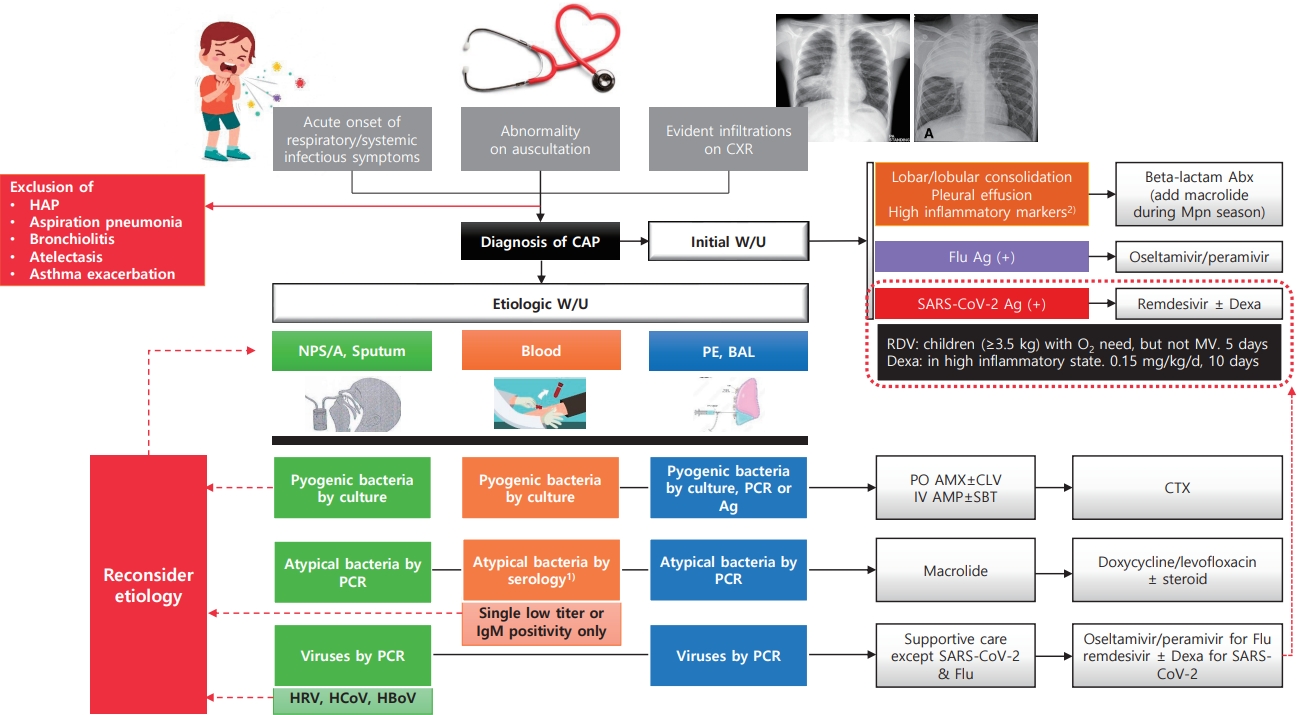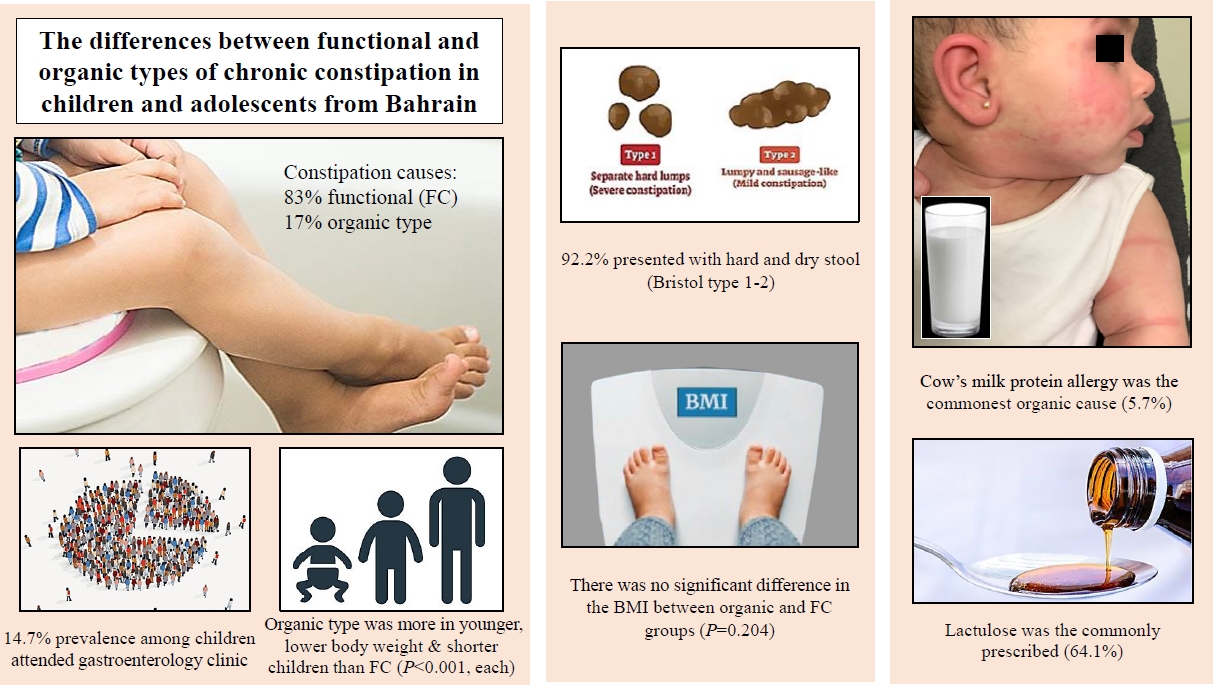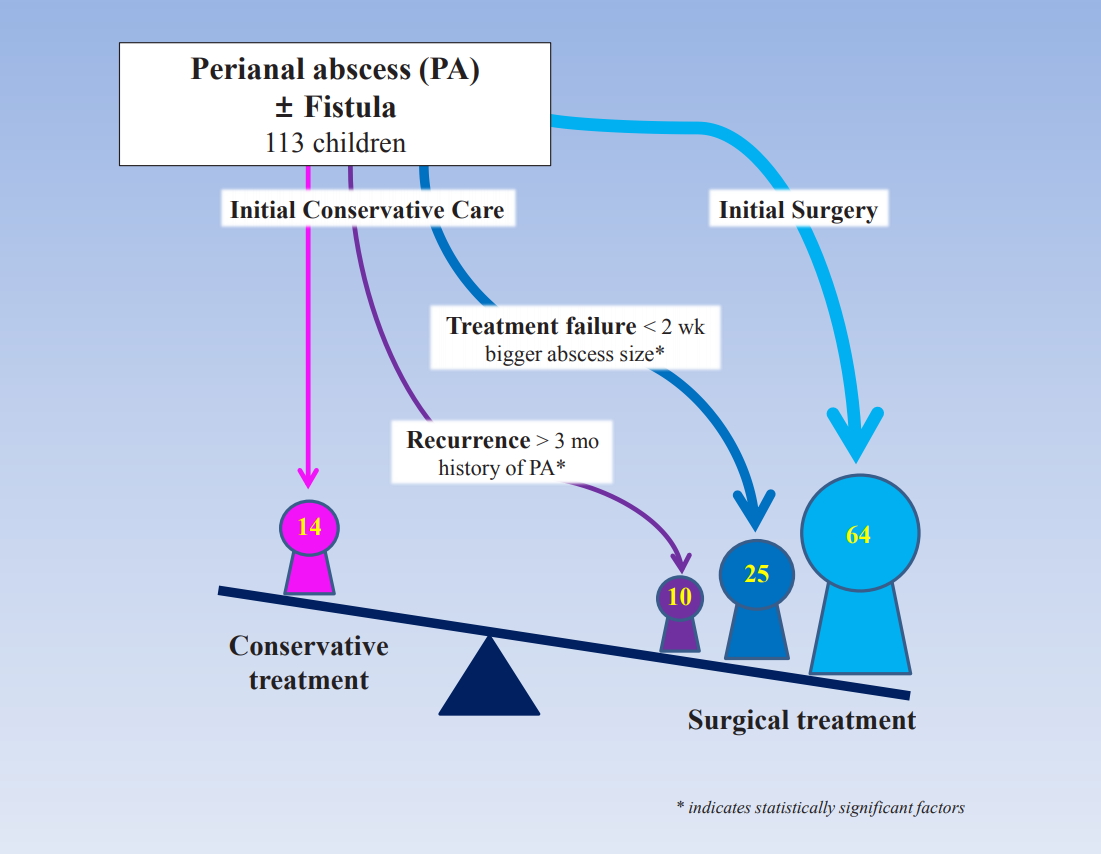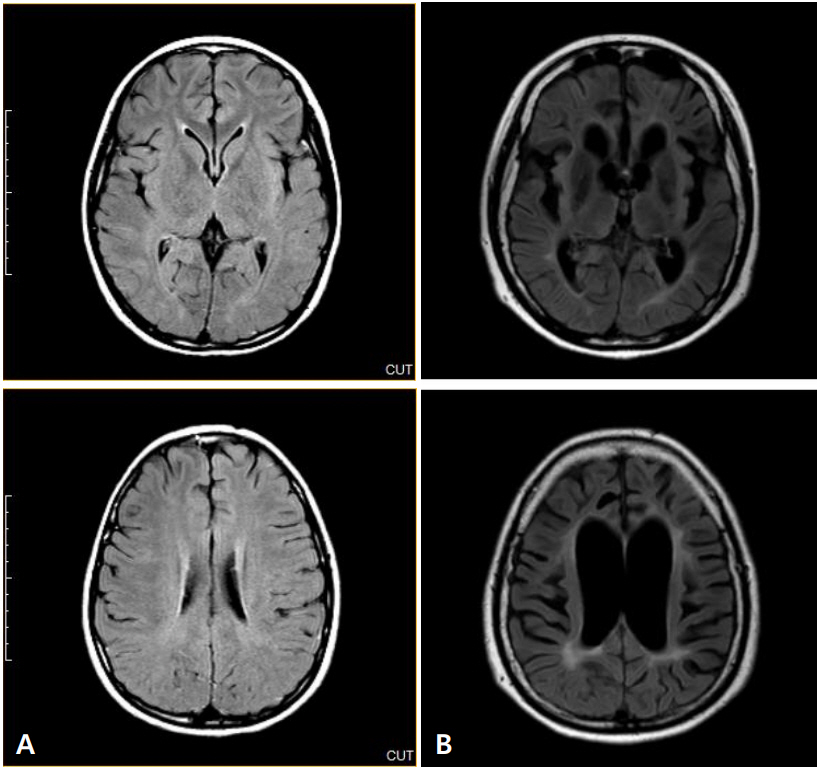Search
- Page Path
-
- HOME
- Search
- Review Article
- Infection
- Community-acquired pneumonia in children: updated perspectives on its etiology, diagnosis, and treatment
- Ki Wook Yun
- Clin Exp Pediatr. 2024;67(2):80-89. Published online June 14, 2023
-

· Most commonly confirmed causes of community-acquired pneumonia (CAP) in children are Mycoplasma pneumoniae (8%–40%) and respiratory syncytial virus (15%–20%).
· Pyogenic bacteria, most commonly Streptococcus pneumoniae (40%–50%) and Streptococcus pyogenes (10%–25%), are detected in 2%–5% of children hospitalized with CAP.
· CAP should be diagnosed conservatively according to clinical and radiological criteria.
· The etiology should be identified via appropriate test result interpretation.
- Original Article
- Gastroenterology
- Assessing indicators and clinical differences between functional and organic childhood constipation: a retrospective study in pediatric gastroenterology clinics
- Hasan M. Isa, Fatema A. Alkharsi, Fatema A. Salman, Maryam S. Ali, Zahra K. Abdulnabibi, Afaf M. Mohamed
- Clin Exp Pediatr. 2023;66(7):296-306. Published online June 14, 2023
-

Question: What causes childhood constipation, and what can predict organic constipation?
Finding: Constipation represents 14.7% of gastroenterology visits. Functional constipation is more common among constipation types, while organic constipation is more common in young children and those with a low body weight, stunted growth, mucus in the stool, and associated diseases.
Meaning: Younger children and those with lower growth or mucus in the stool should be assessed for underlying organic causes of constipation.
- Review Article
- Gastroenterology
- Update on eosinophilic gastrointestinal disease beyond eosinophilic esophagitis in children
- Hye Ran Yang
- Clin Exp Pediatr. 2023;66(6):233-239. Published online January 3, 2023
-

· Eosinophilic gastrointestinal disease (EGID) is uncommon, with a prevalence of 1–30/100,000 in the general population; however, it is increasing worldwide.
· The diagnosis of EGID is based on histopathological findings of endoscopic mucosal biopsy in which tissue eosinophils are counted in each gastrointestinal tract segment of patients with chronic or recurrent gastrointestinal symptoms.
· Individualized treatment strategies, including adequate dietary and pharmacological therapy, may help improve outcomes of children with EGID.
- Original Article
- Neurology
- Long-term neurological cognitive, behavioral, functional, and quality of life outcomes after fetal myelomeningocele closure: a systematic review
- Andre Marolop Pangihutan Siahaan, Martin Susanto, Sarma Nursani Lumbanraja, Dwi Herawati Ritonga
- Clin Exp Pediatr. 2023;66(1):38-45. Published online November 30, 2022
-

· Fetal myelomeningocele closure significantly improved long-term neurological cognitive, behavioral, functional, and quality of life outcomes, most likely by reducing hydrocephalus rates.
· However, fetal myelomeningocele closure is associated with a significant risk of pregnancy complications, especially premature rupture of membranes and preterm delivery.
- Review Article
- Pulmonology
- Overview of management of children with COVID-19
- Dyah Kanya Wati, Arya Krisna Manggala
- Clin Exp Pediatr. 2020;63(9):345-354. Published online July 17, 2020
-

The specific treatments for COVID-19 in children remain inconclusive and debatable despite effectively decreasing its signs and symptoms.
The need for clinical trials and reports should be investigated.
- Genetics and Metabolism
- Neurofibromatosis type I: points to be considered by general pediatricians
- Eungu Kang, Hee Mang Yoon, Beom Hee Lee
- Clin Exp Pediatr. 2021;64(4):149-156. Published online July 15, 2020
-

Neurofibromatosis type 1 (NF1), a prevalent genetic disease that is transmitted in an autosomal dominant manner, is characterized by multiple cutaneous café-au-lait spots and neurofibromas as well as various degrees of neurological, skeletal, and neoplastic manifestations. The clinical features of NF1 increase in frequency with age, while the clinical diagnosis can remain undetermined in some pediatric patients. Importantly, affected patients...
- Original Article
- General Pediatrics
- Efficacy of conservative treatment of perianal abscesses in children and predictors for therapeutic failure
- Lars Boenicke, Johannes Doerner, Stefan Wirth, Hubert Zirngibl, Mike Ralf Langenbach
- Clin Exp Pediatr. 2020;63(7):272-277. Published online May 15, 2020
-

Background: The optimal management of perianal abscess in children is controversial.
Purpose: To evaluate the efficiency of conservative treatment of perianal abscess in children and identify parameters that predict therapy failure. Methods: All cases of children younger than 14 years of age with perianal abscesses between 2001–2016 were evaluated. Results: Of the 113 enrolled patients, 64 underwent subsequent surgery for advanced disease (primary...
- Review Article
- Neonatology (Perinatology)
- Practice for preterm patent ductus arteriosus; focusing on the hemodynamic significance and the impact on the neonatal outcomes
- Jin A Lee
- Clin Exp Pediatr. 2019;62(7):245-251. Published online April 8, 2019
-

Hemodynamically significant preterm patent ductus arteriosus (PDA) affects mortality; comorbidities such as necrotizing enterocolitis, intraventricular hemorrhage, and bronchopulmonary dysplasia; and adverse long-term neurodevelopmental outcomes in preterm infants, particularly in very low birth weight infants. However, recent studies have indicated that there is no consensus on the causal relationship between PDA and neonatal outcomes, the benefit of PDA treatment, the factors...
- Guideline
- Nutrition
- Clinical practice guideline for the diagnosis and treatment of pediatric obesity: recommendations from the Committee on Pediatric Obesity of the Korean Society of Pediatric Gastroenterology Hepatology and Nutrition
- Dae Yong Yi, Soon Chul Kim, Ji Hyuk Lee, Eun Hye Lee, Jae Young Kim, Yong Joo Kim, Ki Soo Kang, Jeana Hong, Jung Ok Shim, Yoon Lee, Ben Kang, Yeoun Joo Lee, Mi Jin Kim, Jin Soo Moon, Hong Koh, JeongAe You, Young-Sook Kwak, Hyunjung Lim, Hye Ran Yang
- Clin Exp Pediatr. 2019;62(1):3-21. Published online December 27, 2018
-

The Committee on Pediatric Obesity of the Korean Society of Pediatric Gastroenterology, Hepatology and Nutrition newly developed the first Korean Guideline on the Diagnosis and Treatment of Obesity in Children and Adolescents to deliver an evidence-based systematic approach to childhood obesity in South Korea. The following areas were systematically reviewed, especially on the basis of all available references published in...
- Original Article
- Hematology and Oncology
- Lymphocyte-monocyte ratio at day 14 of first cisplatin-doxorubicin chemotherapy is associated with treatment outcome of pediatric patients with localized osteosarcoma
- Jun Ah Lee, Hea Lin Oh, Dong Ho Kim, Jung Sub Lim
- Clin Exp Pediatr. 2019;62(2):62-67. Published online October 1, 2018
-

Purpose: We aimed to determine the prognostic significance of lymphocyte counts and the lymphocytemonocyte ratio (LMR) in pediatric patients with osteosarcoma. Methods: We retrospectively reviewed the medical records of 27 pediatric patients with localized extremity osteosarcoma, treated at the Korea Cancer Center Hospital between May 2002 and March 2016. Leukocyte counts and LMR before treatment and on day 14 (LMR14) of...
- Case Report
- Neurology
- A long-term subacute sclerosing panencephalitis survivor treated with intraventricular interferon-alpha for 13 years
- Minsun Kwak, Hye-Ryun Yeh, Mi-Sun Yum, Hyun-Jin Kim, Su Jeong You, Tae-Sung Ko
- Clin Exp Pediatr. 2019;62(3):108-112. Published online September 18, 2018
-

Subacute sclerosing panencephalitis (SSPE) is a rare, progressive, and fatal central nervous system disorder resulting from persistent measles virus infection. Long-term data are scarce, with a maximum follow-up period of 10 years. Interferon-alpha (IFN-α) is a protein that exerts its antiviral activity via enhancement of cellular immune response and is reported to be an effective drug for the treatment of...
- Original Article
- Infection
- Treatment-failure tularemia in children
- Arzu Karlı, Gülnar Şensoy, Şule Paksu, Muhammet Furkan Korkmaz, Ömer Ertuğrul, Rıfat Karlı
- Clin Exp Pediatr. 2018;61(2):49-52. Published online February 28, 2018
-
Purpose Tularemia is an infection caused by
Francisella tularensis . Its diagnosis and treatment may be difficult in many cases. The aim of this study was to evaluate treatment modalities for pediatric tularemia patients who do not respond to medical treatment.Methods A single-center, retrospective study was performed. A total of 19 children with oropharyngeal tularemia were included.
Results Before diagnosis, the duration of symptoms in...
- Review Article
- Oncology
- Prognostic factors and treatment of pediatric acute lymphoblastic leukemia
- Jae Wook Lee, Bin Cho
- Clin Exp Pediatr. 2017;60(5):129-137. Published online May 31, 2017
-
The event-free survival (EFS) for pediatric acute lymphoblastic leukemia (ALL) has shown remarkable improvement in the past several decades. In Korea also, a recent study showed 10-year EFS of 78.5%. Much of the improved outcome for pediatric ALL stems from the accurate identification of prognostic factors, the designation of risk group based on these factors, and treatment of appropriate duration...
- Original Article
- Nutrition
- Effect of tuberculosis treatment on leptin levels, weight gain, and percentage body fat in Indonesian children
- Maria Mexitalia, Yesi Oktavia Dewi, Adriyan Pramono, Mohammad Syarofil Anam
- Clin Exp Pediatr. 2017;60(4):118-123. Published online April 25, 2017
-
Purpose Tuberculosis (TB) remains a problem in the community. TB patients usually experience malnutrition, which is characterized by both decreased body weight (BW) and body fat percentage (BFP). Leptin, an important regulator of BW, also plays an important role in cellular immunity, which is integral to defense against
Mycobacterium tuberculosis infection. We analyzed the effect of an anti-TB treatment regimen on...
- Review Article
- Efficacy and safety of growth hormone treatment for children born small for gestational age
- Il Tae Hwang
- Clin Exp Pediatr. 2014;57(9):379-383. Published online September 30, 2014
-
Recombinant growth hormone (GH) is an effective treatment for short children who are born small for gestational age (SGA). Short children born SGA who fail to demonstrate catch-up growth by 2-4 years of age are candidates for GH treatment initiated to achieve catch-up growth to a normal height in early childhood, maintain a normal height gain throughout childhood, and achieve...
- Original Article
- Continuous renal replacement therapy in neonates weighing less than 3 kg
- Young Bae Sohn, Kyung Hoon Paik, Hee Yeon Cho, Su Jin Kim, Sung Won Park, Eun Sun Kim, Yun Sil Chang, Won-Soon Park, Yoon-Ho Choi, Dong-Kyu Jin
- Clin Exp Pediatr. 2012;55(8):286-292. Published online August 23, 2012
-
Purpose Continuous renal replacement therapy (CRRT) is becoming the treatment of choice for supporting critically ill pediatric patients. However, a few studies present have reported CRRT use and outcome in neonates weighing less than 3 kg. The aim of this study is to describe the clinical application, outcome, and complications of CRRT in small neonates.
Methods A retrospective review was performed in 8...
- Successful and safe treatment of hemangioma with oral propranolol in a single institution
- Sun Hee Chung, Dong Hyuk Park, Hye Lim Jung, Jae Won Shim, Deok Soo Kim, Jung Yeon Shim, Moon Soo Park, Hong Hoe Koo
- Clin Exp Pediatr. 2012;55(5):164-170. Published online May 21, 2012
-
Purpose Dramatic improvement of hemangioma to propranolol has been recently reported; however, details on dose and duration of treatment, potential risks, and monitoring have not been determined. The objective of this study is to describe and analyze the use of propranolol as a first-line treatment or as a single therapy in management of complicated hemangioma.
Methods A retrospective chart review of eight patients...
- Review Article
- Treatment of steroid-resistant pediatric nephrotic syndrome
- Hee Gyung Kang
- Clin Exp Pediatr. 2011;54(8):317-321. Published online August 31, 2011
-
Children who suffer from steroid-resistant nephrotic syndrome (SRNS) require aggressive treatment to achieve remission. When intravenous high-dose methylprednisolone fails, calcineurin inhibitors, such as cyclosporine and tacrolimus, are used as the first line of treatment. A significant number of patients with SRNS progress to end-stage renal disease if remission is not achieved. For these children, renal replacement therapy can also be...
- The treatment of pediatric chronic myelogenous leukemia in the imatinib era
- Jae Wook Lee, Nack Gyun Chung
- Clin Exp Pediatr. 2011;54(3):111-116. Published online March 31, 2011
-
Childhood chronic myelogenous leukemia (CML) is a rare hematologic disease, with limited literature on the methods of treatment. Previously, allogeneic hematopoietic stem cell transplantation (HSCT) was considered the only curative treatment for this disease. Treatment with imatinib, a selective inhibitor of the BCR-ABL tyrosine kinase (TKI), has resulted in prolonged molecular response with limited drug toxicity. Imatinib is now implemented...
- Systematic review of the clinical and genetic aspects of Prader-Willi syndrome
- Dong Kyu Jin
- Clin Exp Pediatr. 2011;54(2):55-63. Published online February 28, 2011
-
Prader-Willi syndrome (PWS) is a complex multisystem genetic disorder that is caused by the lack of expression of paternally inherited imprinted genes on chromosome 15q11-q13. This syndrome has a characteristic phenotype including severe neonatal hypotonia, early-onset hyperphagia, development of morbid obesity, short stature, hypogonadism, learning disabilities, behavioral problems, and psychiatric problems. PWS is an example of a genetic condition caused...
- Change in the treatment strategy for pediatric Crohn's disease
- Mi Jin Kim, Yon Ho Choe
- Clin Exp Pediatr. 2010;53(9):830-833. Published online September 13, 2010
-
Crohn's disease is characterized by chronic inflammation involving any portion of the gastrointestinal tract. Treating Crohn's disease is a major challenge for clinicians, as no curative therapy currently exists. Pediatric Crohn's disease is characterized by frequent relapses, a wide extent of disease, a high prevalence of extraintestinal manifestations, and a severe clinical course. The classic therapeutic approach is known as...
- Original Article
- The characteristic laboratory findings of non-responsiveness to intravenous immunoglobulin in children with Kawasaki disease
- Han Gil Cho, Young Kuk Cho, Jae Sook Ma
- Clin Exp Pediatr. 2010;53(2):228-234. Published online February 15, 2010
-
Purpose : Although intravenous immunoglobulin (IVIG) treatment is an effective first-line treatment for Kawasaki disease, 10-20% of the patients develop persistent fever or coronary artery complications. Medical records of Kawasaki disease patients were reviewed to assess the characteristic laboratory findings of IVIG nonresponsiveness. Methods : We reviewed the clinical records of 118 children with Kawasaki disease who were treated at... -
- Review Article
- Treatment of chronic kidney disease in children
- Joo Hoon Lee
- Clin Exp Pediatr. 2009;52(10):1061-1068. Published online October 15, 2009
-
The treatment of pediatric patients with chronic renal disease comprises management of nutritional imbalance, fluid, electrolyte, and acid-base disturbances, mineral bone disease, anemia, hypertension, and growth retardation. The treatment also includes administration of appropriate renal replacement therapy, if required. Adequate dietary intake of carbohydrates, fats, and proteins and caloric intake must be encouraged in such patients to ensure proper growth... -
- Original Article
- Bilateral retinoblastoma: Long-term follow-up results from a single institution
- Sang Yul Choi, Dong Hwan Kim, Kang Min Lee, Hyun Jae Lee, Mi-Sook Kim, Tai-Won Lee, Sang Wook Choi, Dong Ho Kim, Kyung Duk Park, Jun Ah Lee
- Clin Exp Pediatr. 2009;52(6):674-679. Published online June 15, 2009
-
Purpose : The authors aimed to analyze the long-term effects of treatments, especially external beam radiotherapy (EBRT), in bilateral retinoblastoma patients. Methods : This retrospective study analyzed the medical records of 22 bilateral retinoblastoma patients who were registered between October, 1987 and October, 1998 and followed-up for more than 10 years. They were treated by enucleation, EBRT, and systemic chemotherapy.... -
- Clinical experience with amitriptyline for management of children with cyclic vomiting syndrome
- Ye Jee Shim, Jung-mi Kim, Soonhak Kwon, Byung-Ho Choe
- Clin Exp Pediatr. 2009;52(5):538-543. Published online May 15, 2009
-
Purpose : To report the clinical experience with amitriptyline for managing children with cyclic vomiting syndrome (CVS). Methods : Totally, eleven children (eight males) were diagnosed with CVS. Of these, medical records were reviewed for eight children treated with amitriptyline; three children were not treated because one was not followed up and two were kept under observation to study the... -
- Analysis of cytosine adenine repeat polymorphism of the IGF-I promoter gene in children with idiopathic short stature
- Jae Hoon Moon, Woo Yeong Chun
- Clin Exp Pediatr. 2009;52(3):356-363. Published online March 15, 2009
-
Purpose : A polymorphism in the IGF-I gene promoter region is known to be associated with serum IGF-I levels, birth weight, and body length, suggesting that IGF-I gene polymorphism might influence postnatal growth. The present study aimed to investigate the role of this polymorphic cytosine-adenine (CA) repeat of the IGF-I gene in children with idiopathic short stature. Methods : The... -
- Review Article
- Assessment of retinopathy of prematurity (ROP) revisited
- Jeong Hun Kim, Young Suk Yu
- Clin Exp Pediatr. 2009;52(1):22-27. Published online January 15, 2009
-
Retinopathy of prematurity (ROP) is a major cause of blindness that affects premature infants. With advances in neonatology, ROP is likely to emerge as the most serious problem of vision loss in children even in developed countries; such a situation could be called the third epidemic of ROP. However, controversy and uncertainty still surround favorable outcomes of ROP. For successfully... -
- Neuromuscular disorders in children : Diagnosis and treatment
- Jong Hee Chae
- Clin Exp Pediatr. 2008;51(12):1295-1299. Published online December 15, 2008
-
Inherited muscle diseases are heterogeneous with varying genetic etiologies and present with common symptoms and signs, including weakness, motor developmental delay, and hypotonia. To diagnose these various diseases, a meticulous family and clinical history, physical and neurological examinations, laboratory findings with electromyography, muscle biopsy, and genetic testing are needed. Here, I review several inherited muscle diseases, with a focus on... -
- Original Article
- Diamond-Blackfan anemia: long-term follow-up of six cases
- Young Jun Son, Hee Jo Baek, Hoon Kook
- Clin Exp Pediatr. 2008;51(11):1211-1216. Published online November 15, 2008
-
Purpose : Diamond-Blackfan anemia (DBA) is a rare heterogeneous genetic disorder of infancy and early childhood. It is characterized by red cell aplasia, congenital anomalies, and a predisposition to cancer. Corticosteroids and red cell transfusions are the mainstays of therapy. We describe our experience of 6 cases of DBA that were encountered over a period of 16 years. Methods :... -
- Delayed closure effect in preterm infants with patent ductus arteriosus
- Hyun Ju Lee, Gyu Hong Sim, Kyung Eun Jung, Jin A Lee, Chang Won Choi, Ee Kyung Kim, Han Suk Kim, Beyong Il Kim, Jung-Hwan Choi
- Clin Exp Pediatr. 2008;51(10):1065-1070. Published online October 15, 2008
-
Purpose : This study aims to determine whether early closure (within 7 d) of significant patent ductus arteriosus (PDA) with indomethacin or ligation reduces neonatal morbidity when compared with delayed closure (after 7 d). Methods : Fifty-eight extremely-low-birth-weight infants admitted to the NICU of Seoul National University Hospital from April 2005 to May 2007 with PDA were studied retrospectively. Results :... -
-

-
-

-

-
Impact Factor4.2
-
6.52022CiteScore92nd percentilePowered by







